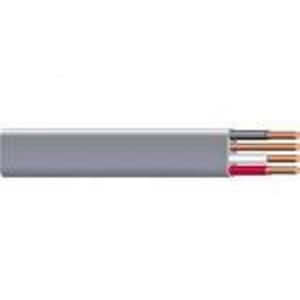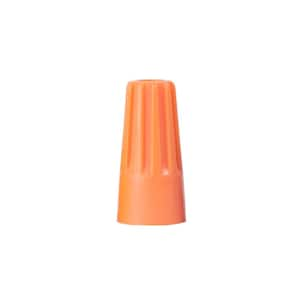
Difficulty
Intermediate
Duration
2-4 hours
Instead of running an extension cord outside, install an outdoor outlet. Outdoor outlets are a much more convenient way to plug in your outdoor tools and lighting, and you can install one in a single day.
Outdoor electrical outlets differ from indoor outlets because they have watertight covers that protect the outlet even with a cord plugged in. Plus, the National Electrical Code requires all outdoor outlets to be GFCI outlets (ground fault circuit interrupter outlets). GFCI outlets trip and turn off automatically when there’s a current leakage or short circuit, which helps prevent fires and accidental shocks.
This guide will show you the step-by-step process of how to install an outdoor outlet to your home by tapping an indoor outlet for power. It’s also possible to run power directly to a new breaker in the panel box, though this method should be done by a licensed electrician.
Tip: As with all electrical projects, check local codes before doing any electrical work to ensure compliance.
Plan the Outlet Location
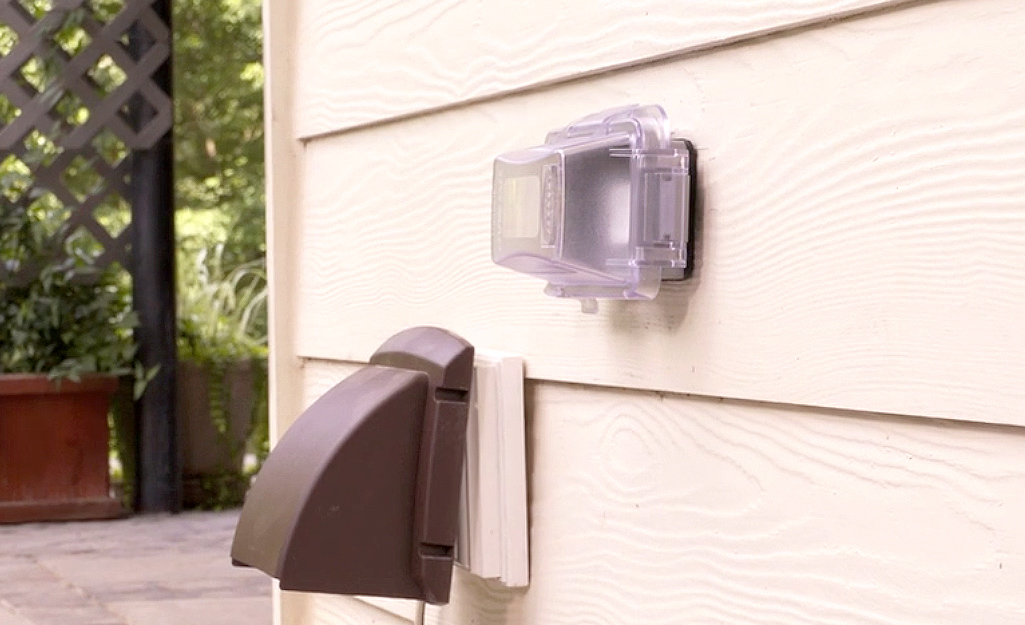
- Before you install an outdoor outlet, determine which exterior wall you want it to be on.
- Locate an interior outlet that is on that exterior wall. To make this project easier, you’ll be using an indoor outlet that’s opposite where you want the outdoor outlet to be.
- Make sure the indoor outlet can handle the new exterior GFCI outlet without overloading. Use a voltage tester to ensure the indoor outlet is running properly.
- Note that building codes prohibit tapping power from outlets in the kitchen, bathroom or laundry room or from any outlets dedicated to large appliances.
- If you can’t find a suitable indoor outlet, you may have to run cable from another power source, such as another outdoor electrical outlet or a basement junction box. If you use another outdoor outlet as the power source, house your connecting cables in a 1/2-inch metal conduit.
- This guide will assume you are tapping into an appropriate indoor outlet opposite where you plan to install the outdoor electrical outlet.
Turn Off Power
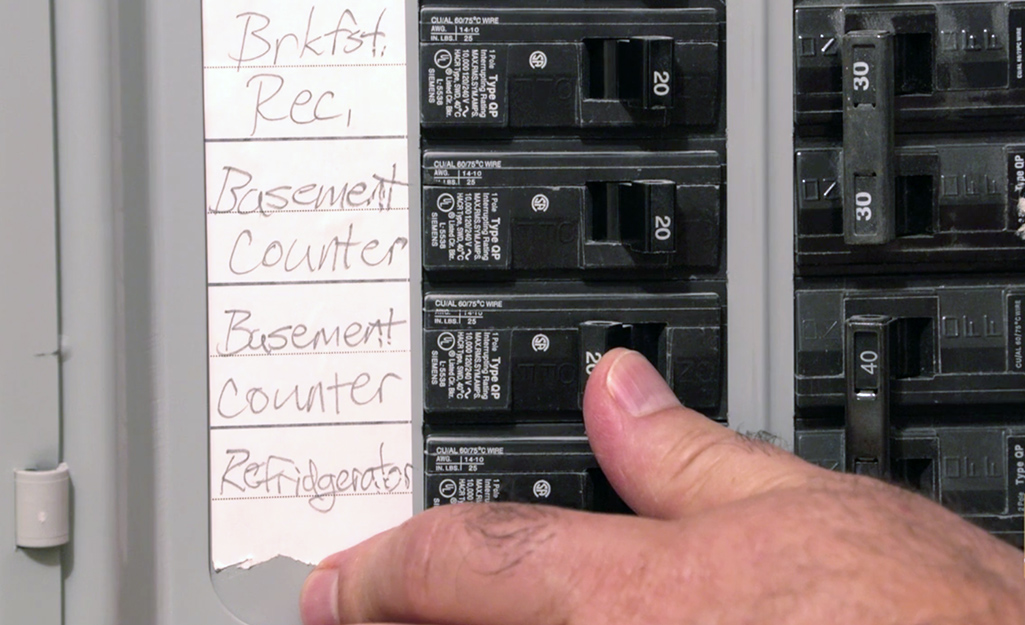
- Turn off the power at your circuit breaker.
- Use a voltage tester to ensure the power is off at the indoor outlet.
- Place a sign on the circuit breaker telling others that electrical work is in progress to make sure no one accidentally turns the power back on.
Remove the Indoor Outlet
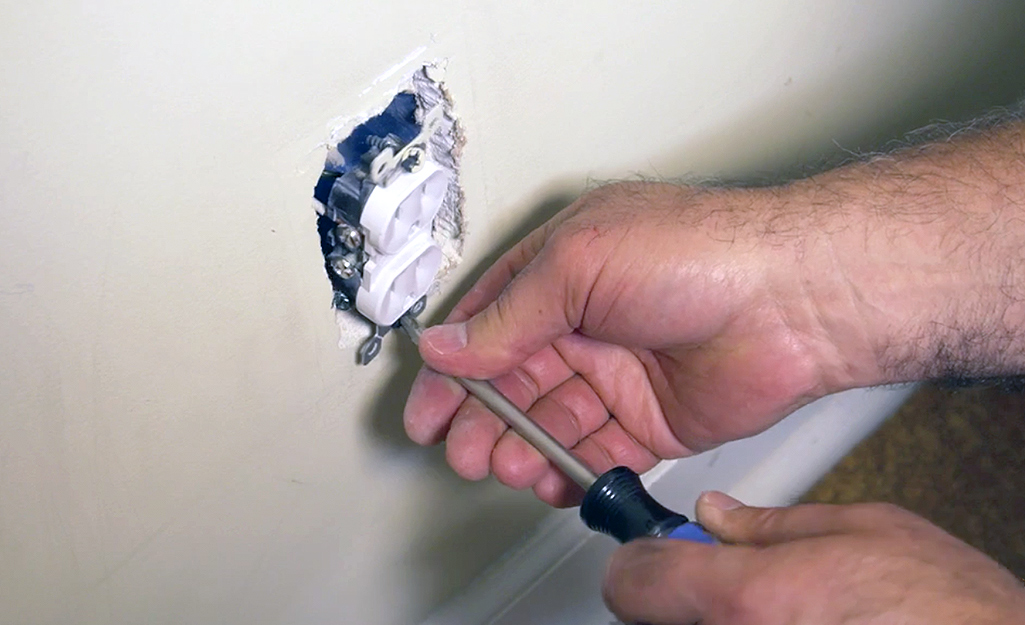
- Unscrew and remove the wall plate on the indoor outlet.
- Unscrew and pull the outlet receptacle from the wall.
- Disconnect the wires from the outlet and push them aside so that the interior of the box is more accessible.
- Make sure the electrical box is large enough to hold additional wires. An overly packed box is a fire hazard. Most boxes are designed to house at least two 14/2 or 12/2 wires. If the box already has that many wires in it, you may need to replace the box. If you need to replace the box, use a larger, plastic remodeling box.
Drill Through to the Exterior Wall
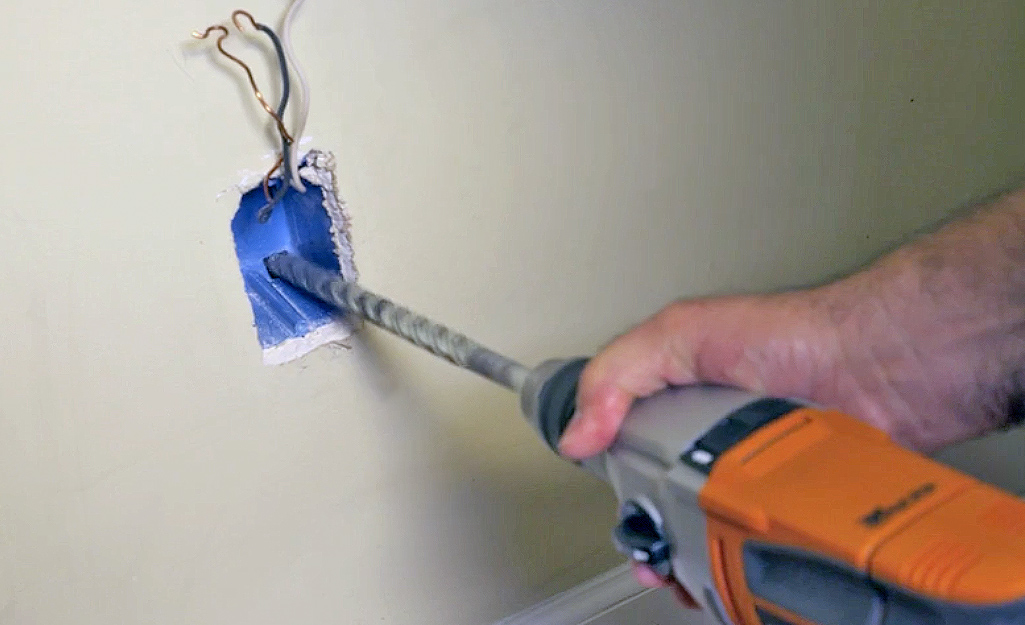
- Using a hammer and screwdriver, knock out a hole in the back or bottom of the electrical box.
- Use a stud finder to find the exact locations of the wall studs before you begin drilling or cutting.
- Insert a 1/4-inch by 18-inch twist drill bit in the hole at a downward angle, so that the new outlet will be below the indoor outlet, not directly behind it. This will ensure you have enough room for both electrical boxes in the wall cavity. Plus, a lower outdoor outlet is easier to hide behind bushes or outdoor furniture.
- Drill a hole through the exterior wall and siding.
Tip: If your exterior wall is stucco or brick rather than siding, use a masonry drill bit with a hammer drill.
Cut a Hole for the Outdoor Outlet
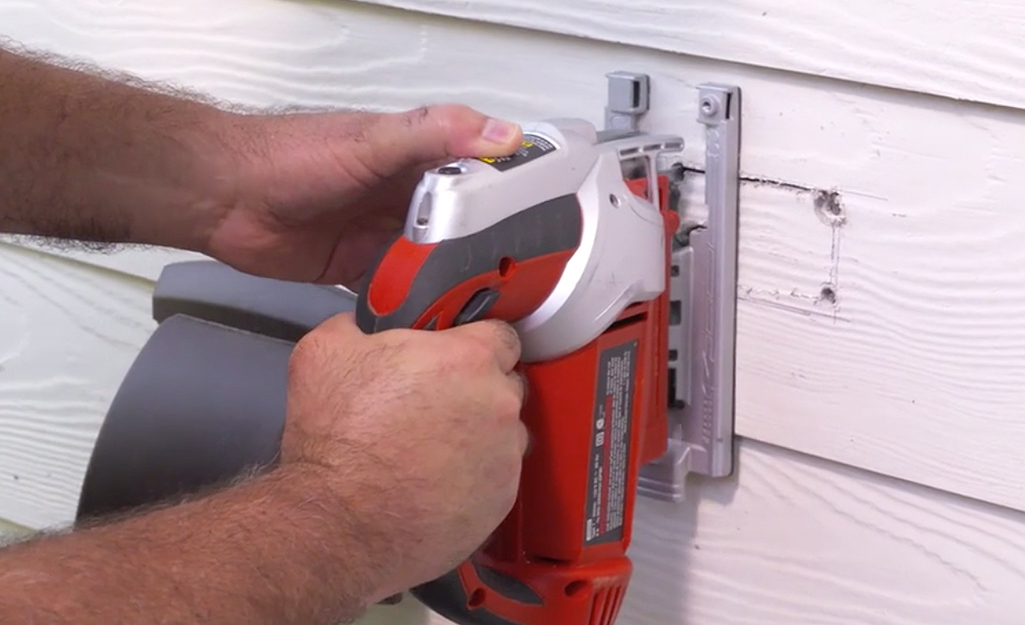
- Hold the outside outlet box against the exterior wall where you plan to hang it, checking to make sure the box covers the hole you just drilled. Level the box, then trace around it with a pencil or chalk.
- Beginning at the hole you drilled, use the keyhole or jigsaw to cut around the outline.
- If you don’t want to cut a hole for a recessed electrical box, you can skip this step and later mount an outdoor electrical box instead.
Tip: If your exterior wall is stucco or brick, drill many small-diameter holes along your outline, then knock out the center with a hammer and chisel.
Run the Cable

- Push NM cable through the hole in the indoor electrical box. Make sure that the gauge wire matches the circuit load; outlets are typically run using 12/2 wire on a 20 Amp circuit.
- Pull the cable through the outdoor hole until you have about 12-inches of cable hanging through the hole.
- Indoors, use wire cutters to cut the cable, leaving about 12-inches extending from the interior electrical box.
- Knock out a hole in the back of the exterior electrical box you will be installing.
- Feed the exterior length of cable through the back of the exterior electrical box.
- If using metal boxes, use a strain relief cord connector in both electrical boxes to hold the cable in place.
Install the Outdoor Outlet

- If you cut a hole for a recessed electrical box, insert the electrical box into the hole. Secure it with screws.
- If you are mounting your exterior electrical box, mount the box to the wall by screwing the clamping tabs until the box is tight against the wall.
- Trim the exterior end of the cable so that you have 4-inches sticking out of the electrical box.
- Remove the cable sheathing down to 1/2-inch.
- Use wire strippers to strip 1/2-inch of insulation from each individual wire.
- Attach the bare copper grounding wire to the green screw of your new exterior GFCI outlet. The green screw is typically on the bottom of the outlet. To attach the wire, slightly loosen the screw, hook the end of the wire around the screw, then tighten the screw again.
- On the side of the outlet, attach the exposed part of the white wire to the neutral screw, which is silver.
- On the opposite side of the outlet, attach the exposed part of the black wire to the common screw, which is gold or brass.
- Carefully push the wires and the outlet into the box.
- Screw down the mounting tabs on the outlet.
- Screw on the cover gasket around the outlet. Then install the cover.
Rewire the Indoor Outlet
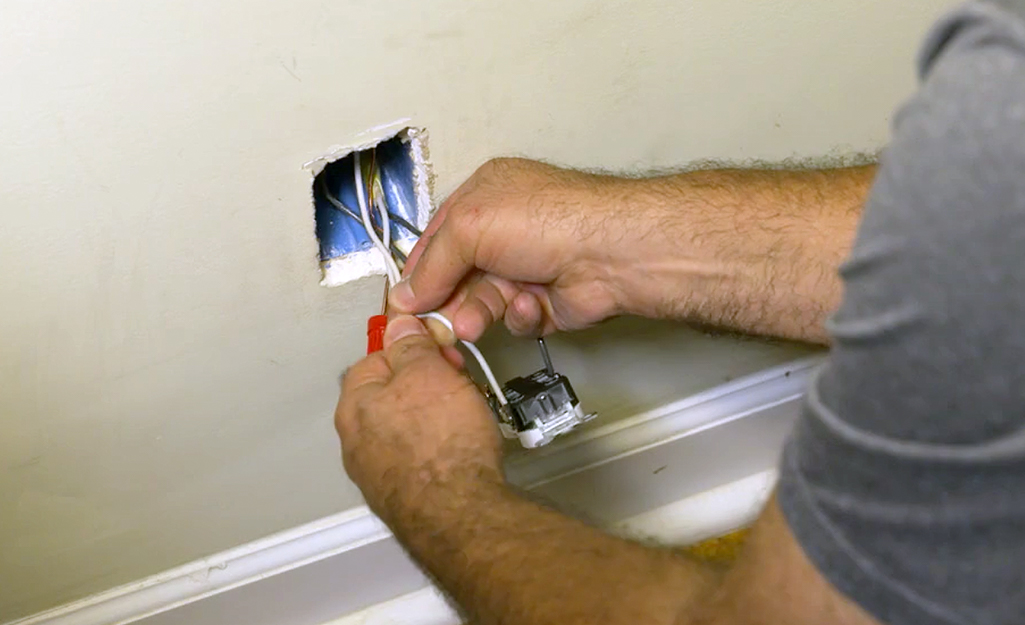
- Inside, trim the interior end of the cable so that you have 4-inches sticking out of the electrical box.
- Remove the cable sheathing down to 1/2-inch.
- Use wire strippers to strip 1/2-inch of insulation from each individual wire.
- If you the outlet only had one set of wires running to it originally, you will reconnect them to the same terminals as they were connected to before.
- Use a grounding wire connector to connect the two ground wires together, and then connect the bare leg to the outlet.
- Connect the new wires to the open terminals - white to silver and black to gold.
- If you already had two sets of wires in the box and have added a third to the exterior outlet, you’ll need to create what’s called a pigtail connection.
- To do so, cut a separate piece of cable about 6-inches long. Remove the sheathing and strip 1/2-inch of insulation from the end of the black wire and white wire.
- Using these separate 6-inch wires, attach the bare copper wire to the green screw on the bottom of the outlet.
- Attach the 6-inch white wire to the silver screw on the side of the outlet.
- Attach the 6-inch black wire to the gold or brass screw on the other side of the outlet.
- At the interior electrical box, connect the other end of the bare copper wire to the two bare copper wires sticking out of the electrical box. To connect them, place the ends together, twist and then screw on a wire nut.
- Using the same method, connect the three white wires together. Then connect the three black wires together.
- Wrap each wire connection with electrical tape for extra security.
- Carefully push the wires and the outlet into the box.
- Screw down the mounting tabs on the outlet.
- Reattach the outlet’s wall plate.
Test the Outlets
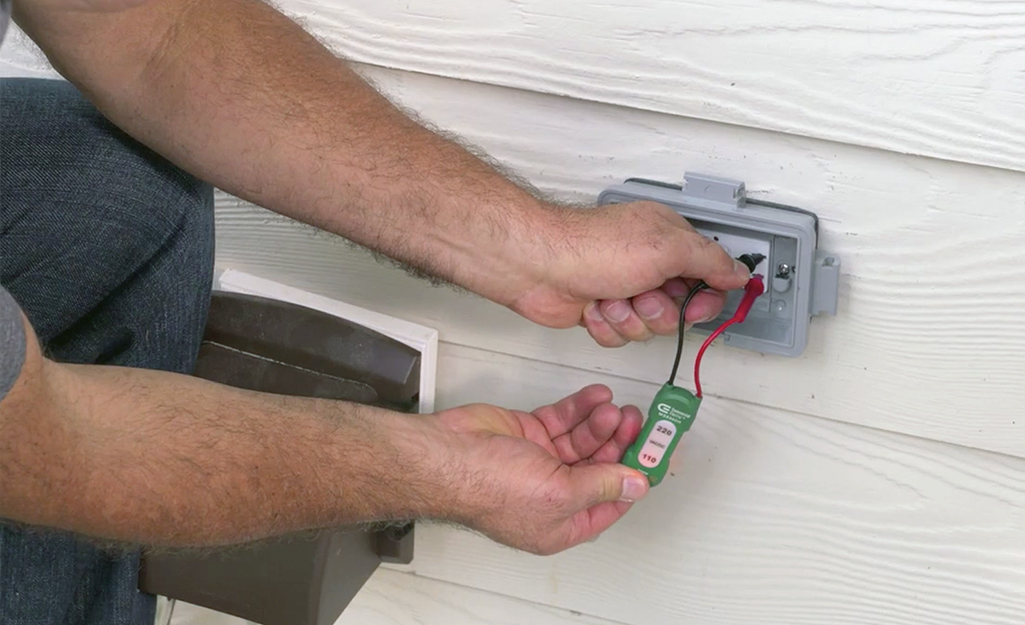
- Turn the power back on at the circuit breaker.
- Use a voltage tester at both the indoor and outdoor outlets to make sure they are working properly.
- If they aren’t working, turn off the power again and check your wire connections at both outlets.
Outdoor outlets are safer and more convenient than an extension cord for powering tools and outdoor lighting. Install an outdoor outlet to get the power you need. Need help identifying a tool or material for an outdoor outlet installation? Find products fast with image search in The Home Depot Mobile App. Snap a picture of an item you like and we'll show you similar products.
